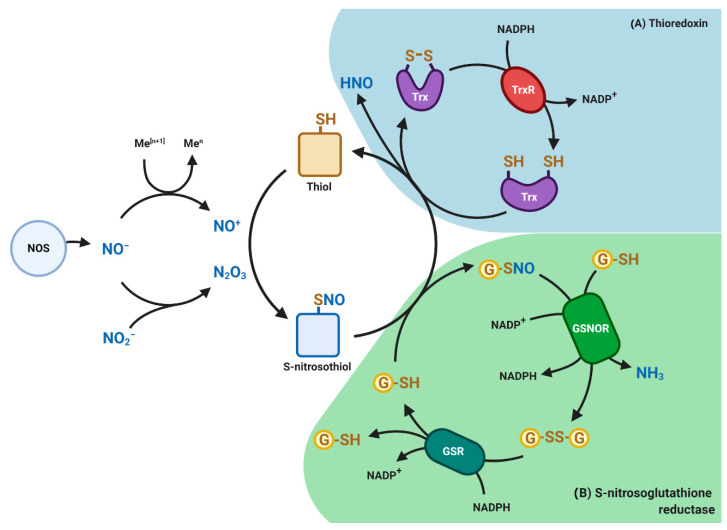Figure 3.
Redox-based post-translational modifications mediated by nitric oxide (NO). Nitric oxide synthases (NOS) generates NO gas which reacts with thiol-containing molecules such as proteins and glutathione (GSH) to form S-nitrosothiols or S-nitrosoglutatione (GSNO), respectively. Shown are (A) Thioredoxin (Trx) pathway (blue) and (B) S-nitrosoglutathione reductase (GSNOR) pathway (green). GSNOR and TR catalyzes the denitrosation of protein nitrosothiols and GSNO. By reducing GSNO to GSSG and NH3, GSNOR indirectly controls the levels of S-nitrosothiols and associated signal transduction. Glutathione (GSSG) is reduced back to GSH by glutathione reductase (GSR) at the expense of NADPH. Similarly, Trx mediates denitrosation of protein nitrosothiols by releasing nitroxyl (HNO) group to form reduced thioredoxin at the expense of NADPH. HNO can diffuse and react in the surrounding environment. An imbalance in NO signaling can promote tumorigenesis and tumor progression.

